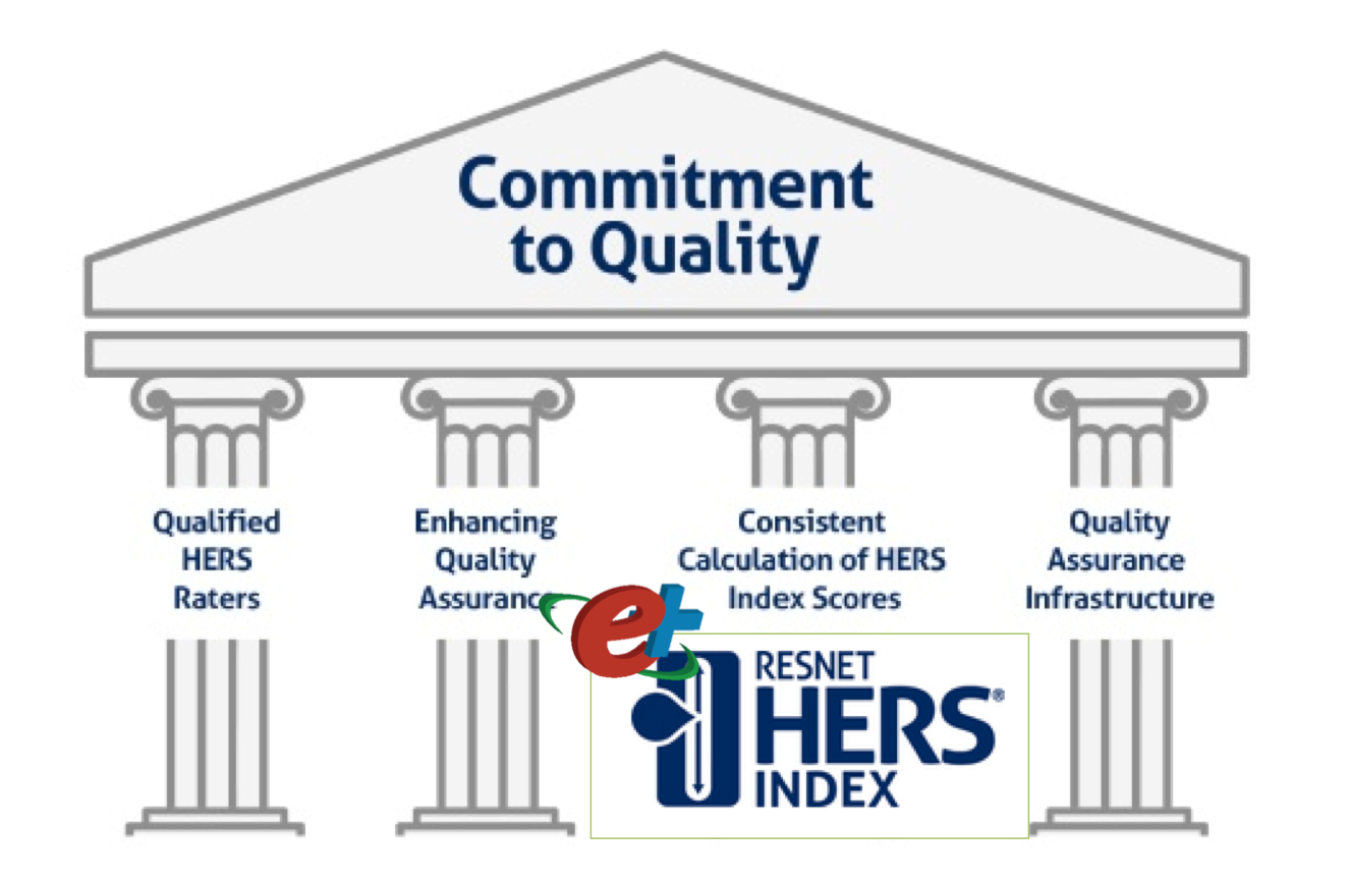Hourly energy modeling—and specifically DOE’s advanced hourly energy modeling engine EnergyPlus—is poised to assume a greater role in residen...
March 23, 2016
RESNET’s decision to use EnergyPlus for the central implementation of HERS Index is part of a broad initiative aimed at enhancing consistency of HERS Index scores.
Hourly whole-building energy modeling—which can accurately model the interactions of time-varying phenomena like weather, occupancy and buildings, and HVAC system operation—is a general purpose analytical tool for evaluating building energy-efficiency in applications like design, code-compliance, and LEED certification. Hourly energy modeling is commonly used in commercial building projects, but is less common in residential projects where many designers use simplified less accurate tools. Now, hourly energy modeling—and specifically DOE’s advanced hourly energy modeling engine EnergyPlus—is poised to assume a greater role in residential energy modeling and energy efficiency.
With the advance of energy efficiency and smarter control technologies, the limitations of simple calculation tools are becoming more problematic, and the industry standard for accuracy has shifted toward hourly simulation. A turning point took place several weeks ago, when RESNET (Residential Energy Services Network) announced that it will move its popular HERS (Home Energy Rating System) Index toward a centralized single-source implementation based on EnergyPlus. HERS—an energy-efficiency scale where 0 corresponds to net-zero energy and 100 corresponds to code-level energy efficiency—is widely used in the new construction industry to demonstrate code compliance, to rate new homes, and to certify homes under programs such as EPA’s ENERGY STAR Certified New Homes, USGBC’s LEED for Homes, and DOE’s Zero Energy Ready Home.
HERS is a calculation specification that allows different implementations. In practice, these different implementations—some of which are not based on hourly simulation—with their technology modeling capabilities create inconsistencies in HERS Index calculations and confusion in the market. The move to EnergyPlus is designed to eliminate inconsistency, improve transparency—EnergyPlus is both fully documented and open-source—and, most importantly, take advantage of DOE’s continued investment in EnergyPlus to accelerate the inclusion of new energy-efficiency technologies in HERS, encouraging their market adoption. HERS software providers will be able to link their applications to EnergyPlus and to channel their efforts toward supporting HERS professionals, rather than maintaining and enhancing proprietary engines with an endless stream of new technologies to implement. EnergyPlus will serve as a certification reference for providers who wish to continue to develop their own engines. Either way, HERS software providers will continue to own the end-user relationship and provide additional functionality and connectivity that serves their users.
Anticipating and promoting residential applications of EnergyPlus, DOE has invested in improving its engine’s residential modeling features. Over the past year, EnergyPlus has integrated a new ground heat transfer model and new models for high-performance residential equipment such as heat pump water heaters. DOE is currently working with Fraunhofer CSE to improve EnergyPlus modeling of air ducts. DOE is also adding residential modeling support to its OpenStudio energy modeling platform, and will move its home energy optimization tool BEopt to OpenStudio in the near future.
DOE’s investment in energy modeling, and specifically in EnergyPlus and OpenStudio, has been paying dividends in the commercial building energy-efficiency industry for a while now. RESNET’s recent decision signals that the return on this investment is about to dramatically increase.
Dr. Amir Roth
Dr. Amir Roth is the technology manager for BTO’s Building Energy Modeling (BEM) subprogram and has served in that role since 2010. From 2001 to 2010 he was first an assistant and then an associate professor with tenure of Computer and Information Sciences at the University of Pennsylvania in Philadelphia. He graduated magna cum laude with a B.S. in physics from Yale University and holds a Ph.D. in computer science from the University of Wisconsin—Madison where he won a dissertation award in 2001. He is a member of the American Society of Heating, Refrigeration, and Air-Conditioning Engineers (ASHRAE), and the International Building Performance Simulation Association (IBPSA).
Email Amir Roth ►


